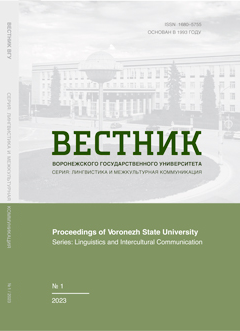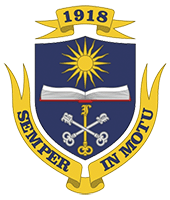Салишские языки и доисторические миграции: опыт междисциплинарного изучения
Аннотация
Междисциплинарность рассматривается авторами как необходимая методология исследования комплексных проблем, неразрешимых в рамках одной дисциплины. Междисциплинарные исследования, в которых лингвистика является ведущей областью научного знания, способны пролить свет на проблему заселения Северной Америки в конце плейстоценовой эпохи. По мнению авторов, архаичные индейские салишские языки, локализованные на северо-западе США и юго-западе Канады и обладающие цивилизационной матрицей, базирующейся на мифологическом сознании, актуальны в исследованиях, связанных с реконструкцией диахронных моделей и исторических процессов в общеязыковом и междисциплинарном контекстах. Территория распространения салишских языков лежит непосредственно на пути миграции человека в Новый Свет. В настоящей работе представлено исследование салишских языков с позиций решения проблемы заселения Северной Америки, соответствующий материал анализируется с позиций лингвистики, геомифологии и геохронологии. В результате исследования материалов реконструкций праформ обнаруживается фонетическое сходство и фонетические соответствия при сравнении базовых лексем основного списка (песок, рыба, давать, рука, слышать (слушать), глаз, вода, живот, кто, нога (ступня), земля, знать, кровь, этот (тот), гореть, голова) прасалишского языка с прабанту, праенисейским, с семьями ностратического праязыка, а также праалгского, протоалгонкино-вакашского, протонивхского языков. Кроме того, авторы выявили закономерность, что ядерные мифологемы (птица-громовержец, трикстер и др.) салишей Северо-запада Америки и ряда других регионов мира во многом тождественны, а их возникновение может объясняться контактами человека с представителями мегафауны ледниковой эпохи. Все это указывает на то, что заселение Северной Америки и формирование салишских языков согласуется с общей схемой распространения современного человека из Африки по всему миру, начавшегося порядка 60 тыс. лет назад. Данное исследование указывает на отсутствие аргументов в пользу более раннего или более позднего заселения континента, которое следует датировать концом плейстоцена, т. е. 15–10 тыс. лет назад.
Скачивания
Литература
2. Erlandson J. M., Braje T. J. From Asia to the Americas by boat? Paleogeography, paleoecology, and stemmed points of the northwest Pacific. In Quaternary International. 2011. Vol. 239. Pp. 28–37.
3. Price M. Americas peopled in a single wave, ancient genome reveals. In Science. 2018. Vol. 359. P. 14.
4. Berezkin Y. E. Mify zaselyayut Ameriku: Areal’noe raspredelenie fol’klornyh motivov i rannie migracii v Novyj Svet [Myths Colonize the Americas: Area distribution of folklore motifs and early migrations into the New World]. Moscow: OGI, 2007.
5. Vasil’ev S. A., Berezkin Y. E., Kozinrsev A. G. Sibir’i pervye amerikancy [Siberia and First Americans]. St. Petersburg: Faculty of Philology of the St. Petersburg State University, 2011.
6. Ikonnikova O. N., Ruban D. A. Mezhdistsiplinarnyj sintez geomifologii i lingvistiki: k voprosu o datirovke salishskikh yazykov [Interdisciplinary synthesis of geomythology and linguistics: on the issue of the age of the Salishan languages]. In Proceedings of Voronezh State University. Series: Linguistics and Intercultural Communication. 2018. No. 1. Pp. 131–136.
7. Kozyrski W. H., Malovichko A. V. Archaeolinguistics as a Way to Overcome the Impasse in Comparative Linguistics. In Journal of Advances in Linguistics. 2018. Vol. 9. Pp. 1313–1323.
8. Stein J. K. Exploring Coast Salish Prehistory. The Archeology of San Juan Island. Seattle and London: University of Washington Press, 2000. 136 p.
9. Mohs G. Spiritual Sites, Ethnic Significance and Native Spirituality: the Heritage and Heritage Sites of the Sto:lo Indians of British Columbia. Available at: URL
10. Ikonnikova O. N., Zaikin A. A. Otrazhenie mifologicheskogo soznaniya v arhaichnom yazyke (na materiale selishskih indejskih yazykov) [Reflection of Mythological Consciousness in the Archaic Language (within the Framework of the Salishan Indian Languages)]. In Problemy operacionalizacii i interpretacii mezhdisciplinarnogo znaniya v kontekste sovremennoj prikladnoj filosofii. Rostov-on-Don: YuRIU RANHiGS. 2016. Pp. 296–311.
11. Vasiljev S. A. Beringiya i problema pervonachal’nogo zaseleniya chelovekom Ameriki [Beringia and the problem of the Initial Human Colonization of America]. Available at: URL
12. White J. M. Indejtsy Severnoj Аmeriki. Byt. Religiya. Kul’tura [Indians of North America. Life. Religion. Culture]. Moscow: Centrpoligraf, 2006. 251 p.
13. Mulligan C. J., Szathmary E. J. E. The peopling of the Americas and the origin of the Beringian occupation model. In American Journal of Physical Anthropology. 2017. Vol. 162. Pp. 403–408.
14. O’Brien M. J., Buchanan B. Cultural learning and the Clovis colonization of North America. In Evolutionary Anthropology. 2017. Vol. 26. Pp. 270–284.
15. Dickinson W. R. Geological perspectives on the Monte Verde archeological site in Chile and pre-Clovis coastal migration in the Americas. In Quaternary Research. 2011. Vol. 76. Pp. 201–210.
16. Saint Pierre M. Antiquity of mtDNA lineage D1g from the southern cone of South America supports pre-Clovis migration. In Quaternary International. 2017. Vol. 444. Pp. 19–25.
17. Lesnek A. J., Briner J. P., Lindqvist C., Baichtal J. F., Heaton T. H. Deglaciation of the Pacific coastal corridor directly preceded the human colonization of the Americas. In Science Advances. 2018. Vol. 4. P. eaar5040.
18. Hoffecker J. F., Elias S. A., O’Rourke D. H., Scott G. R., Bigelow N. H. Beringia and the global dispersal of modern humans. In Evolutionary Anthropology. 2016. Vol. 25. Pp. 64–78.
19. Hubbe M., Neves W. A., Harvati K. Testing evolutionary and dispersion scenarios for the settlement of the New World. In PLoS ONE. 2010. Vol. 5. P. e11105.
20. Zubov A. A. Biologo-antropologicheskaya harakteristika korennogo doevropejskogo naseleniya Ameriki [Biological and anthropological characteristics of the indigenous pre-European population of America]. Available at: URL
21. Nikolaev S. L. Toward the reconstruction of Proto-Algonquian-Wakashan. In Journal of Language Relationship. 2017. Vol. 15. Pp. 250–278.
22. Shevoroshkin V. On The Origin of Salish, Wakashnan, and North Caucasian Languages. In International Journal of Modern Anthropology. 2008. Vol. 1. Pp. 85–121.
23. Sicoli M. A., Holton G. Linguistic phylogenies support back-migration from Beringia to Asia. In PLoS ONE. 2014. Vol. 9. P. e91722.
24. Bae C J., Douka K., Petraglia M. D. On the origin of modern humans: Asian perspectives. In Science. 2017. Vol. 358. P. 1269.
25. Hoffecker J. F., Hoffecker I. T. Technological complexity and the global dispersal of modern humans. In Evolutionary Anthropology. 2017. Vol. 26. Pp. 285–299.
26. Reyes-Centeno H. Out of Africa and into Asia: Fossil and genetic evidence on modern human origins and dispersals. In: Quaternary International. 2016. Vol. 416. Pp. 249–262.
27. Perreault C., Mathew S. Dating the origin of language using phonemic diversity In PLoS ONE. 2012. No. 7. Pp. e35289.
28. Kozyrski W. H., Malovichko A. V. Language monogenesis: preliminary results. In Origin of language and culture: ancient history of mankind. 2008. Vol. 3. Pp. 26–33.
29. Guthrie’s Proto-Bantu forms. Available at: URL
30. Kuipers A. H. Salish Etymological Dictionary. In Occasional Papers in Linguistics. 2002. Vol. 16. Pp. 1–240.
31. Starostin S. A., Starostin G. S. An Etymological Database Project ‘The Tower of Babel’. Available at: URL
32. Gamkrelidze T. V., Ivanov Vyach. Vs. Indoevropejskij yazyk i indoevropejtsy. Rekonstruktsiya i istoriko-tipologicheskij analiz prayazyka i protokul’tury. V 2-kh ch. CH. 2. Semanticheskij slovar’ obshheindoevropejskogo yazyka i rekonstrukitsya indoevropejskoj protokul’tury. Tbilisi: Izdatel’stvo Tbilisskogo universiteta, 1984. 1330 p.
33. Berezkin Y. E. Tematicheskaya klassifikaciya i raspredelenie fol’klorno-mifologicheskih motivov po arealam (Analytical Catalogue of Mythological Motifs). Available at: URL
34. Martin P. S. Twilight of the Mammoths: Ice Age Extinctions and the Rewilding of America. Berkeley and Los Angeles: University of California Press, 2005. 269 p.













